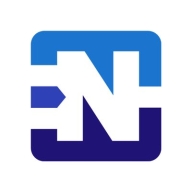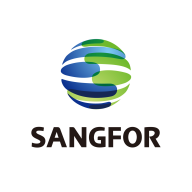


Netgate pfSense and Sangfor NGAF are key players in the firewall and security solutions market. Netgate pfSense holds an advantage with its cost-effectiveness and flexibility, especially appealing to businesses seeking open-source solutions. Sangfor NGAF shines with its comprehensive security features, providing robust threat detection and application control.
Features: Netgate pfSense is favored for its stateful firewall, customizable open-source nature, and excellent community support. It excels with flexible configurations, third-party app integration, and customizable dashboards. Sangfor NGAF boasts strong application control, effective anti-ransomware measures, and reliable intrusion detection, making it a competitive choice for integrated security.
Room for Improvement: Netgate pfSense could enhance web filtering, offer a centralized management pane, and improve VPN and SD-WAN support. Users seek better third-party package integration and documentation for virtualized hardware. Sangfor NGAF would benefit from an improved user interface, better third-party integrations, and more efficient traffic management features.
Ease of Deployment and Customer Service: Netgate pfSense offers flexible deployment across on-premises and cloud environments, supported by a robust community. Sangfor NGAF provides flexible hybrid cloud setups and centralized support channels, though its interface can be more challenging to navigate compared to pfSense.
Pricing and ROI: Netgate pfSense is recognized for its low total cost of ownership and significant ROI due to its open-source model, benefiting small to medium-sized businesses with advanced networking needs. Sangfor NGAF offers competitive pricing, delivering enhanced security features at a lower cost compared to other dedicated firewall solutions.
| Product | Market Share (%) |
|---|---|
| Fortinet FortiGate | 19.9% |
| Netgate pfSense | 10.5% |
| Sangfor NGAF | 1.1% |
| Other | 68.5% |



| Company Size | Count |
|---|---|
| Small Business | 350 |
| Midsize Enterprise | 130 |
| Large Enterprise | 187 |
| Company Size | Count |
|---|---|
| Small Business | 166 |
| Midsize Enterprise | 33 |
| Large Enterprise | 28 |
| Company Size | Count |
|---|---|
| Small Business | 15 |
| Midsize Enterprise | 10 |
| Large Enterprise | 10 |
Fortinet FortiGate excels in providing integrated VPN, firewalling, and Unified Threat Management (UTM) with centralized management and high availability. It supports remote access and comprehensive threat protection, making it a preferred choice for securing networks.
Fortinet FortiGate offers a robust security platform with features such as strong intrusion prevention, application control, and web filtering. Its integration with Active Directory and SD-WAN functionality provides scalable solutions for large networks. Users appreciate its ease of use through centralized management interfaces, ensuring robust security with flexible configurations. However, FortiGate could enhance its graphical interface and technical support responsiveness, address firmware bugs and costly licensing, improve logging, integrate better with third-party tools, and strengthen scalability and memory for log storage. Complexity in configuration and the need for intuitive features are noted challenges, and there's a demand for advanced security, zero-trust capabilities, and AI integration.
What are the key features of Fortinet FortiGate?Fortinet FortiGate is widely implemented across industries like education, finance, and government. Companies use it for firewall protection, VPN, and SD-WAN capabilities, ensuring secure perimeter and data center security. It facilitates remote access management and traffic routing optimization, offering reliable security and connectivity solutions.
Netgate pfSense is widely leveraged by organizations for its comprehensive capabilities in firewalls, VPN servers, and bandwidth management. It suits LAN, WAN, and DMZ networks, offering secure, scalable, and efficient networking solutions.
Netgate pfSense stands out in diverse environments with its enterprise-grade features and cost-effective operations compared to competitors like Cisco. Deployed as an edge device, it optimizes routing, ad-blocking, content filtering, and traffic shaping. Users benefit from its versatile configurations, robust firewall protection, VPN functionality, and ISP load balancing. The open-source nature allows for extensive customization, integrating plugins like Snort and pfBlockerNG, and compatibility with third-party tools enhances its utility. The intuitive GUI combined with detailed logging and centralized management fortifies network security.
What features define Netgate pfSense?
What benefits should be considered for ROI?
Organizations in industries such as finance, healthcare, and education find Netgate pfSense integral due to its advanced security features and cost benefits. Its scalable architecture and strong VPN support are crucial for industries requiring stringent data protection and reliable remote access. The adaptability of pfSense makes it suitable for dynamic environments seeking comprehensive, secure networking solutions.
Sangfor Next Generation Firewall (also known as NGAF) is a converged security solution providing protection against advanced threat, malware, viruses, ransomware and web-based attacks using integrated security features like firewall, IPS, anti-virus, anti-malware, APT, URL filtering, Cloud Sandbox, and WAF. As the world's first AI-enabled and fully integrated Next Generation Firewall & Web Application Firewall (WAF), NGAF offering the security visibility, real-time detection and response, simplified operation and maintenance and high-performance application layer security needed to operate an enterprise network in total security. Tested and proven to provide cutting-edge network security by ICSA Labs and endorsed by Gartner Inc., NGAF harnesses the power of Sangfor’s Neural-X threat intelligence and analytics platform and Engine Zero’s innovative malware detection to provide next-generation protection for today’s enterprise.
We monitor all Firewalls reviews to prevent fraudulent reviews and keep review quality high. We do not post reviews by company employees or direct competitors. We validate each review for authenticity via cross-reference with LinkedIn, and personal follow-up with the reviewer when necessary.